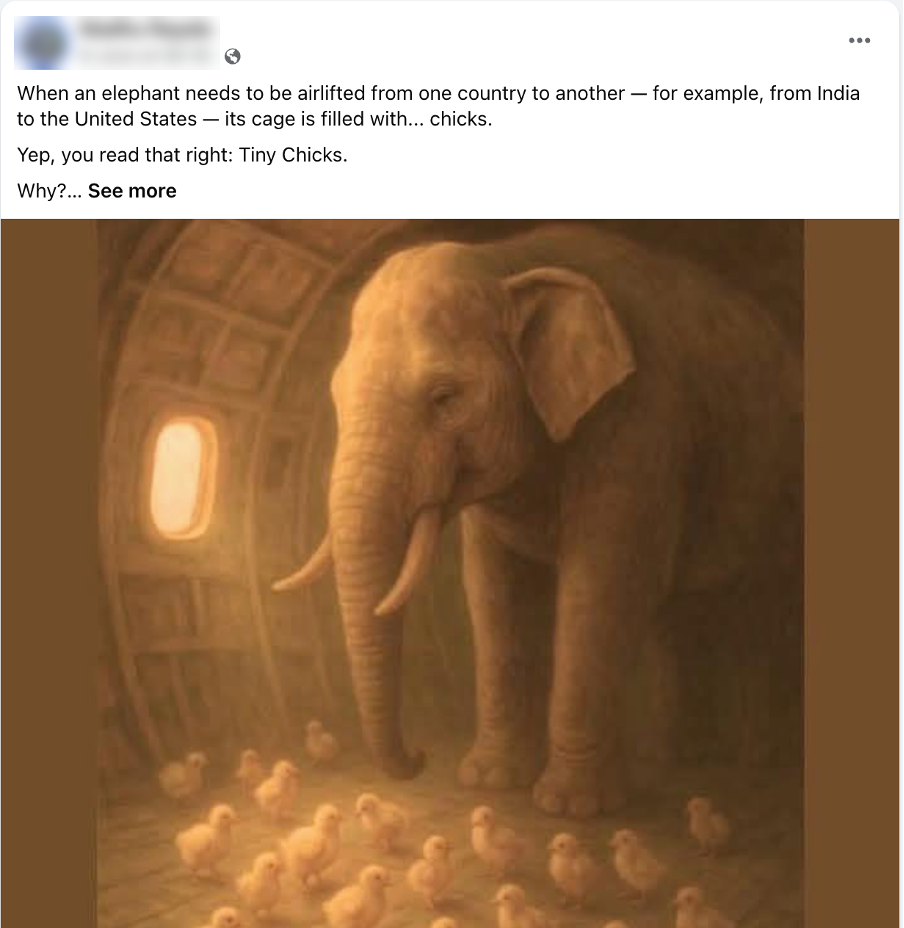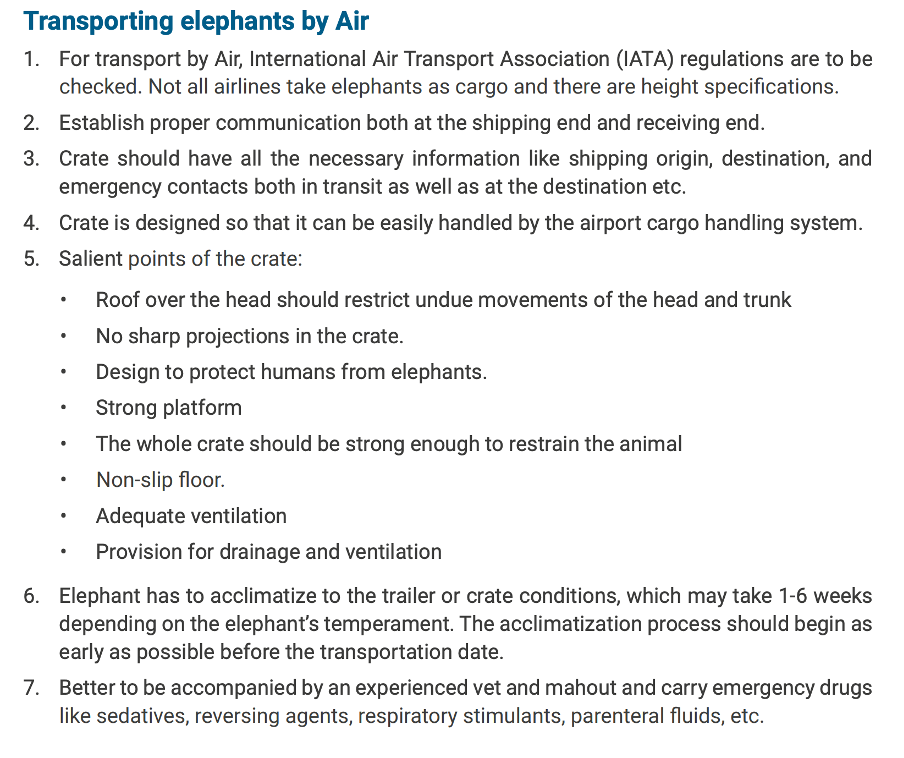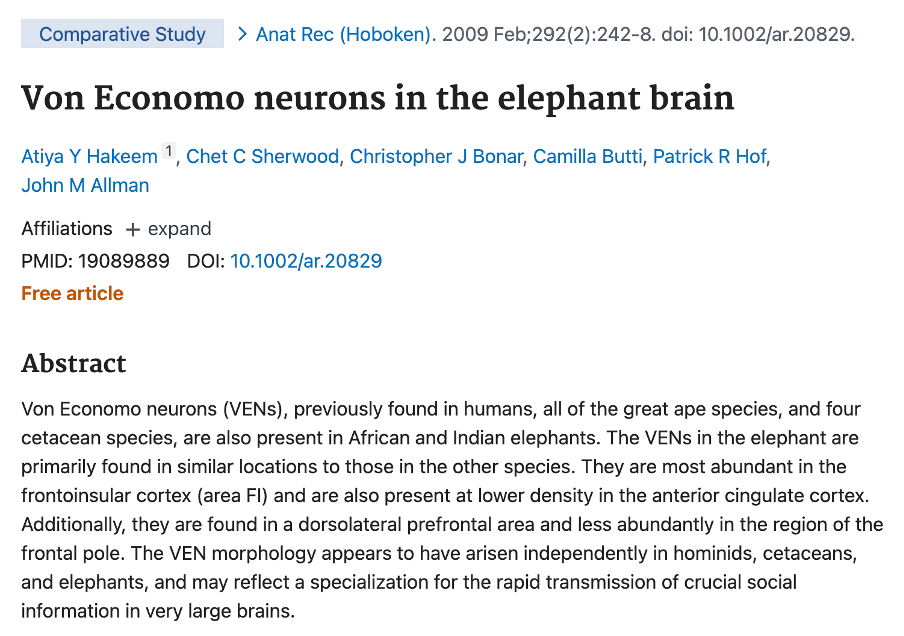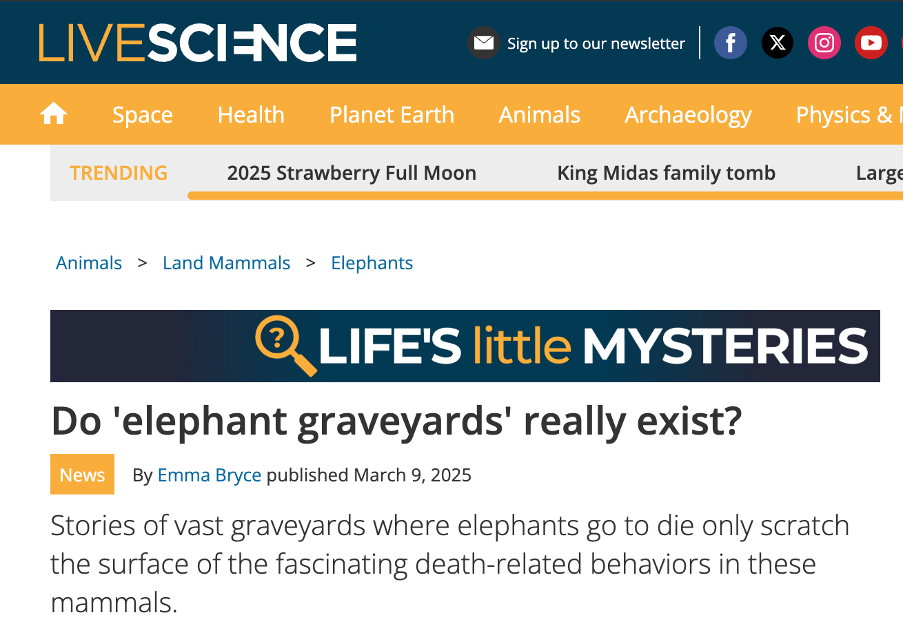A touching viral post (here, here & here) about elephants claims that during air transportation, the elephant’s crate is filled with small chicks to keep it calm, as the elephant is supposedly afraid of hurting them and therefore remains still. The post further claims that elephants possess a special type of neurons, similar to those in humans, associated with self-awareness and empathy. It also mentions that elephants go to a secluded place to die, leaving the herd, and includes an anecdote allegedly told by Leonardo da Vinci about elephants. Let’s verify the claims made in the post.

Claim: During air transportation, elephants are kept calm by filling their crates with tiny chicks, as the elephants remain still to avoid harming them.
Fact: There is no evidence that elephants are transported by air with crates filled with tiny chicks. While elephants do possess von Economo neurons linked to complex emotions and social behaviour, the claim that they go to a secluded place to die has no scientific backing. Additionally, the philosophical anecdote attributed to Leonardo da Vinci about elephants has no historical record. Hence, the claims made in the post are MISLEADING.
We first searched and reviewed media reports (here, here and here) about the air transportation of elephants across various parts of the world, but found no mention of chicks being used in the elephants’ crates during the process. We then examined the International Air Transport Association’s (IATA) Live Animals Regulations, a globally recognised standard for transporting live animals by commercial airlines. This manual outlines safety measures, feeding and medical protocols, and container requirements for transporting elephants by air. Nowhere does it mention the use of chicks.

Similarly, the Indian government’s Captive Elephant (Transfer or Transport) Rules, 2024, the Tamil Nadu Forest Department’s Handbook on the Management of Captive Elephants, and other wildlife transportation guidelines also do not refer to the use of chicks during elephant air transport. Instead, these documents recommend the use of mild sedatives, if needed, administered by experienced veterinarians, with the elephant accompanied by its mahout. Further details on elephant air transportation can be found here and here.

As for the claim in the viral post about elephants possessing special neurons, scientific studies confirm that elephants do have spindle cells, also known as von Economo neurons. These specialised brain cells, also found in humans, great apes, and some whales, are associated with complex social behaviours, emotional processing, and possibly self-awareness. However, their precise role in empathy and consciousness remains under active research.

Regarding the anecdote attributed to Leonardo da Vinci, while he did sketch elephants (here & here), there is no historical record of him expressing such philosophical praise as claimed in the viral post. Lastly, the popular belief that elephants intentionally leave their herd and go to a secluded place to die is unproven. Although widely shared in folklore and popular media, wildlife researchers have not observed or documented such behaviour in the wild.

To sum it up, there is no evidence that elephants are transported by air with crates filled with tiny chicks, and several other claims in the viral post are either scientifically unverified or mythical.



